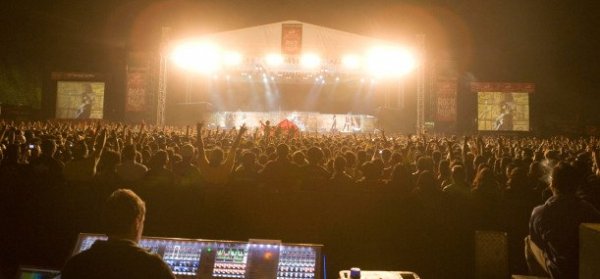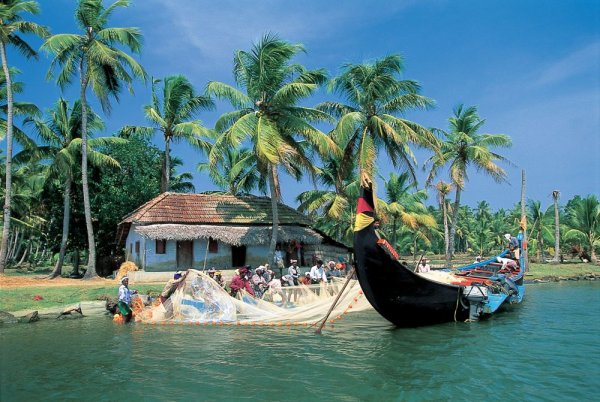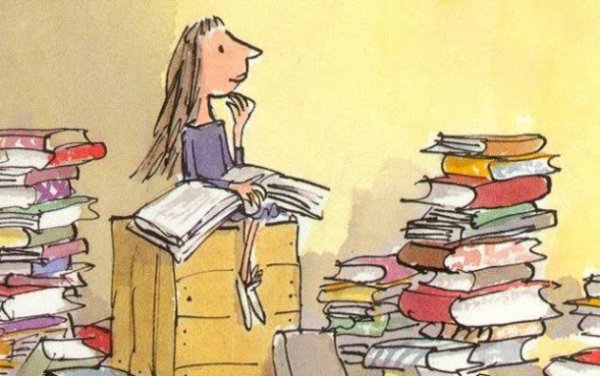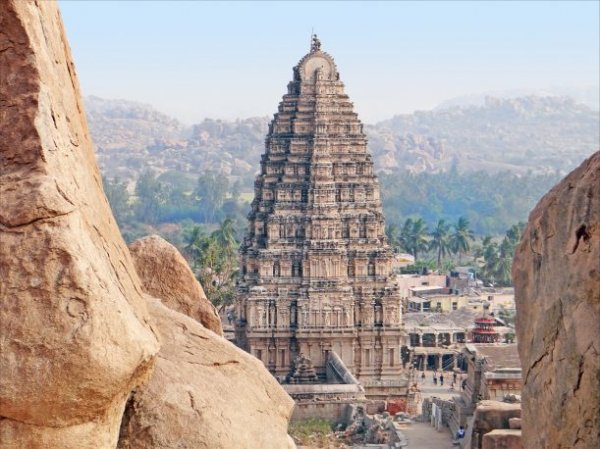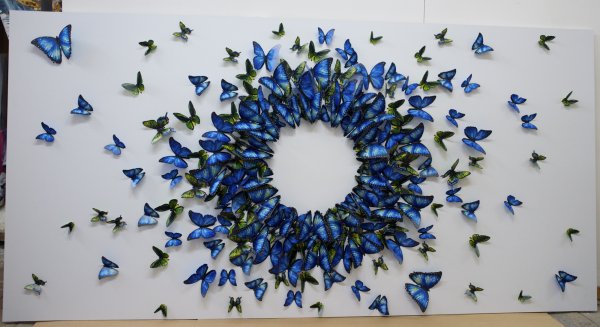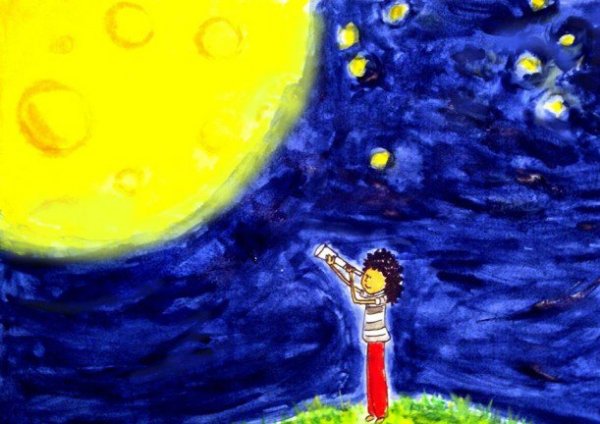
Editor’s Note: This photo essay is part of our series on communities around Sri Lanka. Click here for more photographs on the Vedda community in the Gal Oya National Park.
The Veddas are Sri Lanka’s indigenous people. Or as they call themselves, the Wanniya-laeto or the Forest Dwellers. Once a proud and independent people, they are now often reduced to tourist attractions. In the face of encroaching influences from the outside world, they are struggling to preserve their traditions and culture.
In Dayananda Binaragama’s book Balangoda Manawaya saha Ape Adiwasi Varige Atththo, it’s said the Vedda people still remember their ancient origins as the oldest peoples of Sri Lanka with pride, even though they have been forced to assimilate into the general populace. How they tell their origins is somewhat different from the well known story from the Mahavamsa. While the Mahavamsa will state that they are the descendents of the children of Kuveni, who ran away to the jungle after being banished from both King Vijaya and the native Yakkha tribe, they will be quick to point out that their roots predate Vijaya and that they are descendents of an important community from pre-Buddhist times. Even their language shows Indo-Aryan roots that have no connection to Sinhala. Robert Knox believed that in the 12th century, King Parakramabahu I used Vedda troops in his battles. But later on it would seem that due to the influence of Buddhism, which advocates non-violence, the Sinhalese people distanced themselves from the relationship they had with the Vedda people as they still followed the old ways of hunting game.
According to Prof. Dayananda Somasundara’s book Sri Lankaawe Aadiwasin, the word Vedda comes from the Pali word for bowman. The word Vadi also meant “one who roams the forest” in ancient Sinhala. The name “Sabara” was also once given to the Wanniya-laeto and it’s possible the Sabaragamuwa region was named so because of their presence. In 1911 C.G. Seligmann noted in The Veddas that they encountered 12 Vedda colonies. However, according to Prof. Sugathapala de Silva in Dambaane Vedibas, when he began his studies in 1963 only three regions with Vedda populations remained; Dambana, Bulugahaladena and Thamankaduwa. Most of the communities in Dambana and Gurukumbura were relocated to Girandurukotte under the Mahaweli scheme. For the communities that were evicted due to the Gal Oya project, new settlements were created at Pollebadda and Rathugala. Due to relocations such as this, the present day “Vedda country” seems limited to the Uva and Digamadulla regions, but it is believed that the extent of Vedda settlements was far greater in ancient times.
In a census taken in 1881 there was a Vedda population of 2200. According to Dayananda Binaragama’s book, in 2008 the chief Wanniya-laeto had said that there are no more than 1500 families in the entire island with a majority living in Dambana and Polebadde. The Eastern Vedda community resides in the Vakarai in the Batticaloa district and it only consists of around 100 families. Only a few of the older generation still keep their culture and traditions alive to this day. In the 1980s, when the Indian Peace Keeping Forces (IPKF) arrived in Sri Lanka, this community was relocated from their native jungles and had live with the urban Tamil population of the area. Now, after years of assimilation into the general populace, they face the challenge of safeguarding their culture for future generations. For example, unlike their counterparts in Dambana, the Eastern Veddas do not speak their own language. They speak Tamil. With post-war relocation to Vakarai alongside the other non-Vedda communities, they have lost their traditional way of life. Where gathering honey was once their main source of income, with deforestation that is no longer viable. So they have resorted to fishing and chena cultivation as an alternative source of income.
Culture
The Vedda are traditionally cave dwellers, although it is not unusual to have them built straw huts near villages as their homes. Interestingly, they would change houses a few times a year following animal migration patterns. For example, as animals would move towards watering holes in the dry seasons, the Vedda would follow and build another house in the lowland areas.
Researchers had noted that the Vedda led very good home lives. As a family unit, cooperation and togetherness was greatly valued. Sometimes several families would live in a single dwelling. Children were well taken care of. Among families, the Vedda took care not to exceed the bounds of the land that was allocated to them. But game and food were shared and not kept to oneself no matter how difficult the hunt was. Even weapons were not kept individually but in a communal “armoury”. There was no concept of virginity or patriarchy, and men and women were treated as equals. But there were gender roles in the household. Men hunted and gathered honey, which was known as Kadarnige Diyathana. The women would gather root vegetables called Kobbi. These were cooked over a fire or boiled. Meats were dried or smoked. Another way of preservation was stuffing meat in the hollow of a tree, filling it with honey and then sealing it.
In the past, childbirth took place in the household itself. The older mothers would assist the pregnant mother through labour. Many rituals would be observed and the mother and child put on strict diets and natural medications in accordance with the wisdom they had gathered over the generations. A child would be named within a month of birth. But they would be called pet names like Goraka/Goraki, Thuta/Thuti till they were toddlers. Names like Poramola, Sulliyaa, Suwandi, Pinchi are part of Vedda culture but now Sinhala and Tamil names have made their influence felt in the communities. If a death occurred in the community, the body would simply be covered with dried leaves and left in the cave they called home. Any other occupants would move to a new place. The cave would only see reuse after many years. Even today prayers are made to the “Yakkha relatives” upon a death. The Vedda community worship their gods as they would worship their ancestral relatives. They believe that the deceased will join the Yakkha relatives in the afterlife. The prayer is conducted in a ceremony where a meal is prepared and offered in a shrine. This shrine is an integral part of a Vedda community. The gods they offer prayers to are the leaders of the Yakkha, known as the Yakkha of the mountain and the chief female deity, Kuveni.
Modernization
From ancient times through to most of Sri Lanka’s colonial history, the Vedda were left to their own devices. This policy ended after independence. From 1947, the government made inroads into Vedda territory in the name of education and development. The forests were cut down to make room for buildings and chena cultivation was introduced. From then on to this day, the Vedda have turned to agriculture. Rice, and whatever they grow from chena cultivation, are what consists of their diet now. This was despite the protest of the Vedda leaders of that time. With life moving from the forest to villages since 1947, the daily life of the Vedda has also changed greatly. Formal education came to the community when the Dambana primary school opened in 1947. Now many Vedda children are interested in higher tertiary education as well. With these changes, however, the traditional knowledge of the Veddas is slowly being lost. As time is spent on formal education, there is no time for the children to be schooled in the old ways. For example, childbirth is now handled by the government family health worker, or at the hospital. This is safer for the mother and child, but the diets that were said to be best for the mother and child are slowly being forgotten.
The modern Vedda would even come to the city in search of employment, rather than live a simple life in the jungle. Media has also made a great impact. Television and radio influence, with mobile phones being a temptation to the younger Vedda generations as well, has only complicated things. Awareness of the language, dress, politics and culture of the outside world has entered the Vedda community, and chasing these elements has left many stuck between two worlds. The Dambana community have been protesting against the impact made on them by the outside world for many years. Notably last year representatives of the Eastern indigenous community requested that their rights be included in any new constitution that was being drawn up. They asked that their right to live in the jungle, hunt game and conduct agriculture, while safeguarding the ecosystem, must be protected, and that illegal housing in forest areas must be stopped. It was further suggested that the ancient title of leadership “Pattan Kanthi” be reinstated within their community, and that they receive concessions for education and employment. They also wished to be recognised as a separate minority community.
Tourism is also a factor that looms large and divisively over the community. It brings prosperity, but it also reduces this proud people to objects of attraction. The influence of foreign cultures is not small either.
For now the Vedda strike a precarious balance between survival and extinction. While the elders of the tribe still breathe, the essence of their identity still exists. But as the younger generations assimilate into mainstream culture in search of greener pastures, and the exploitation from the outside world only heightens, who knows how much longer our Wanniya-laeto will remain with us?
Text by Dilina Amaruwan
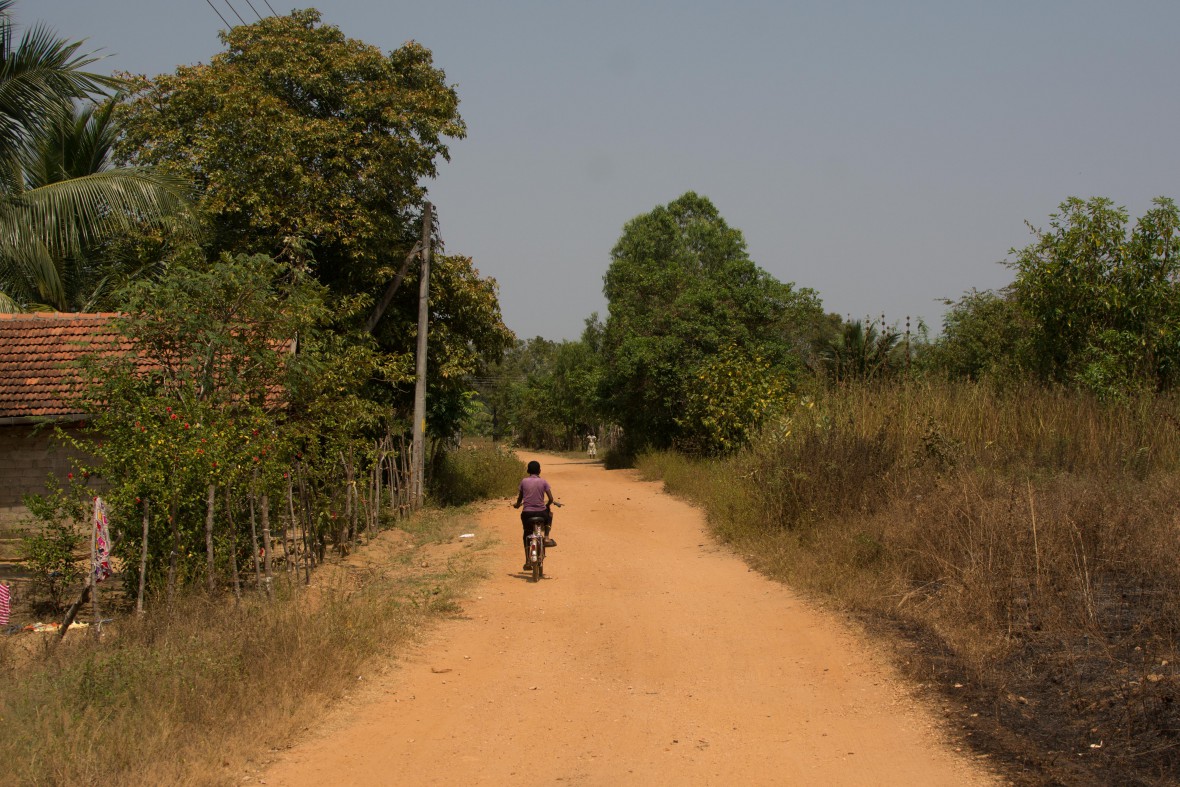
Vakari, Eastern Province Sri Lanka.
In search of the Vedda village called Kunchakulam, in the Batticaloa District.
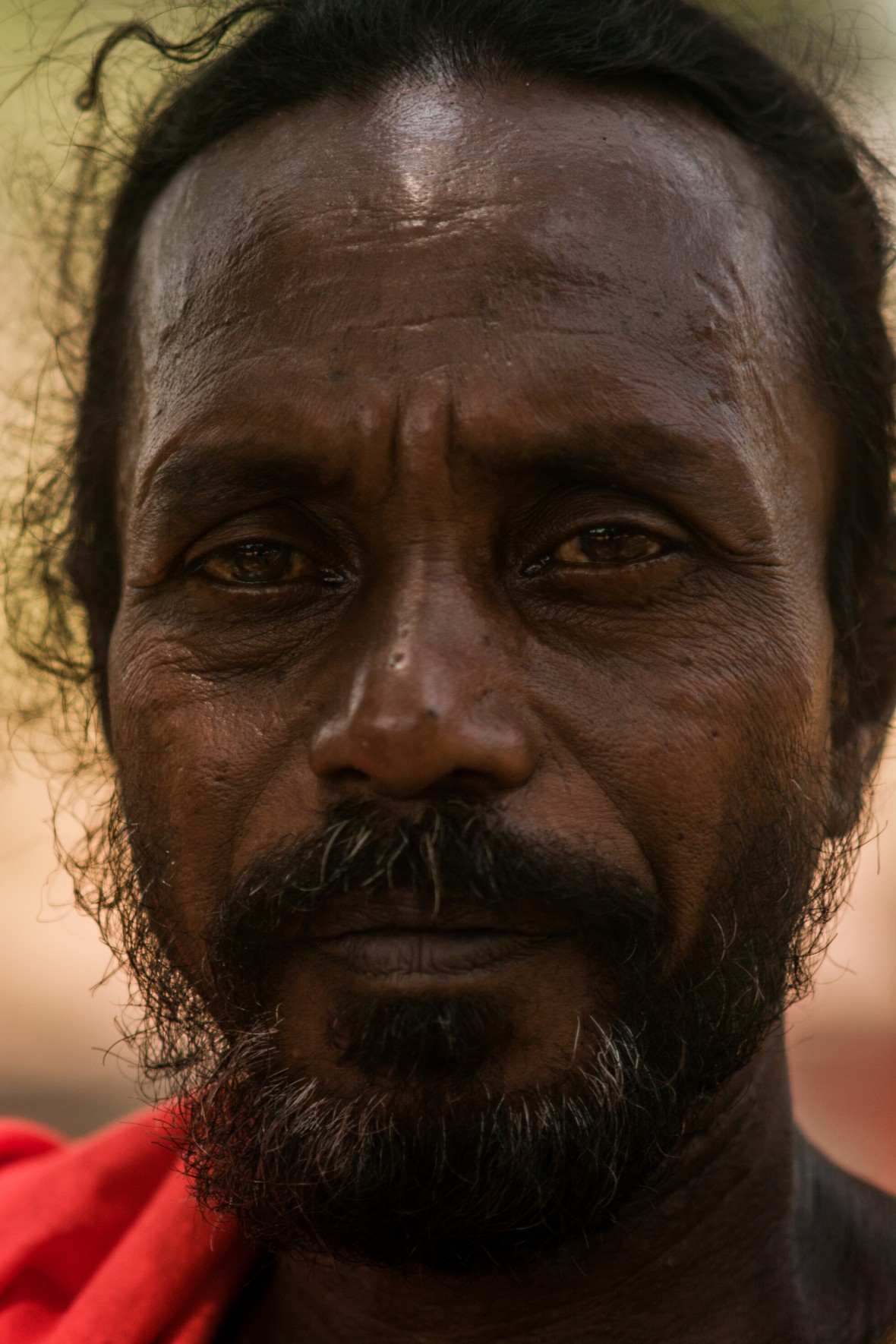
Vedda Chief Velayutham on their way of life:
“We don’t hunt as much as we used to, but generally the game entails wild boar and deer.Due to restrictions by the wildlife conservation department and the civil administration, we have reduced our practices. We also extract honey from the forests from June onwards.”
On language: “Many Veddas here speak Tamil. We have been Hindus for years now. Our Vedda lineage split into two. During the time of the British, one sect branched off to Mahiyangana and Dambana and the others to the shores.”
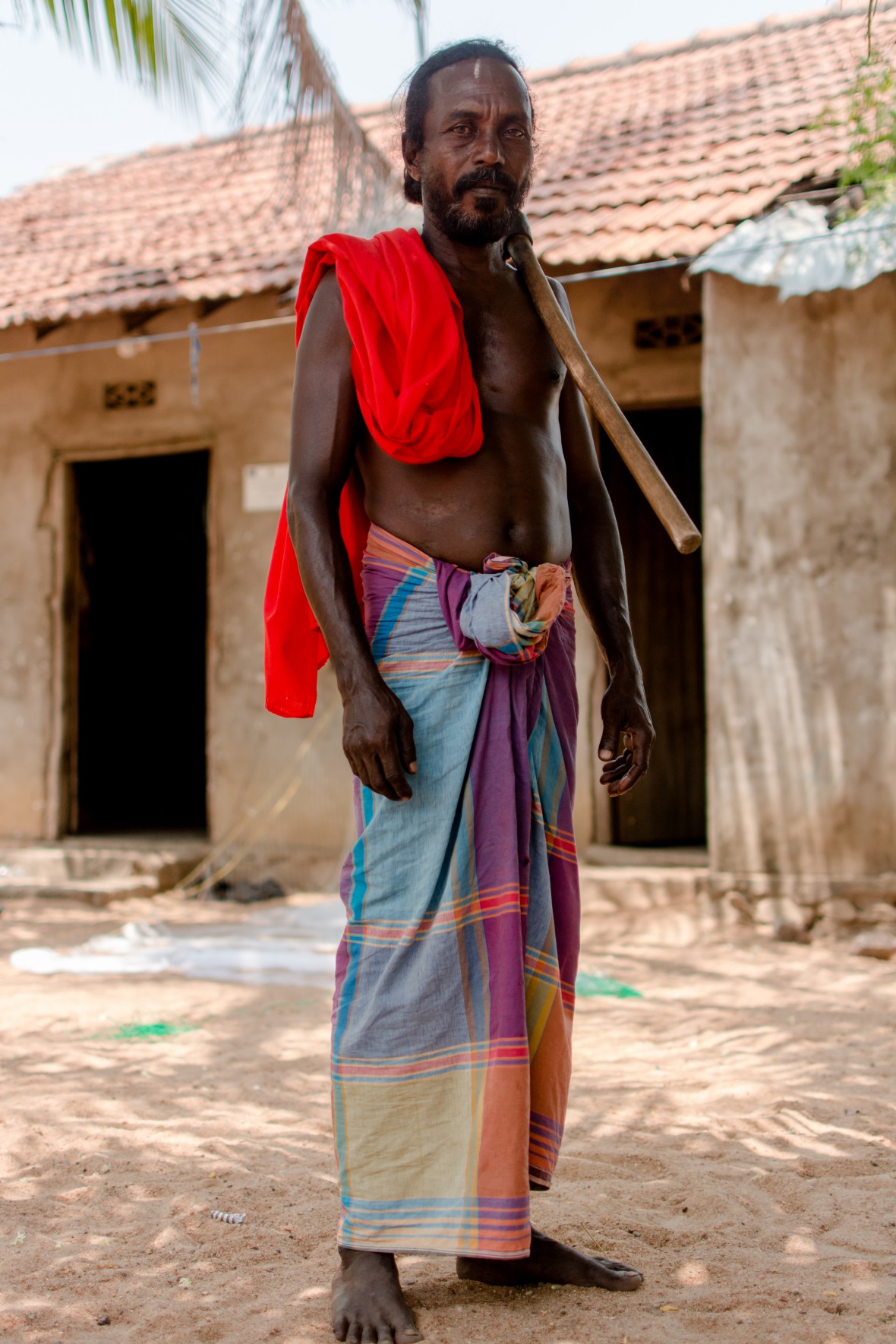
“We used to be in the forests during the time of the British. They took us from there and built a Tamil school in Mankerny (which is also my birthplace) and a Catholic Church right next to it, slowly converting most of us to Christianity. This is why some Veddahs of the East have names such as ‘Antony’”.

“The LTTE had a rule where one person from each family had to go to war. It was really hard for us at that time. We used to pack rice and send our young children into the forest when the LTTE used to come here. We faced many hardships during the war because of both sides. When we went into the forest, many get killed or lost.”
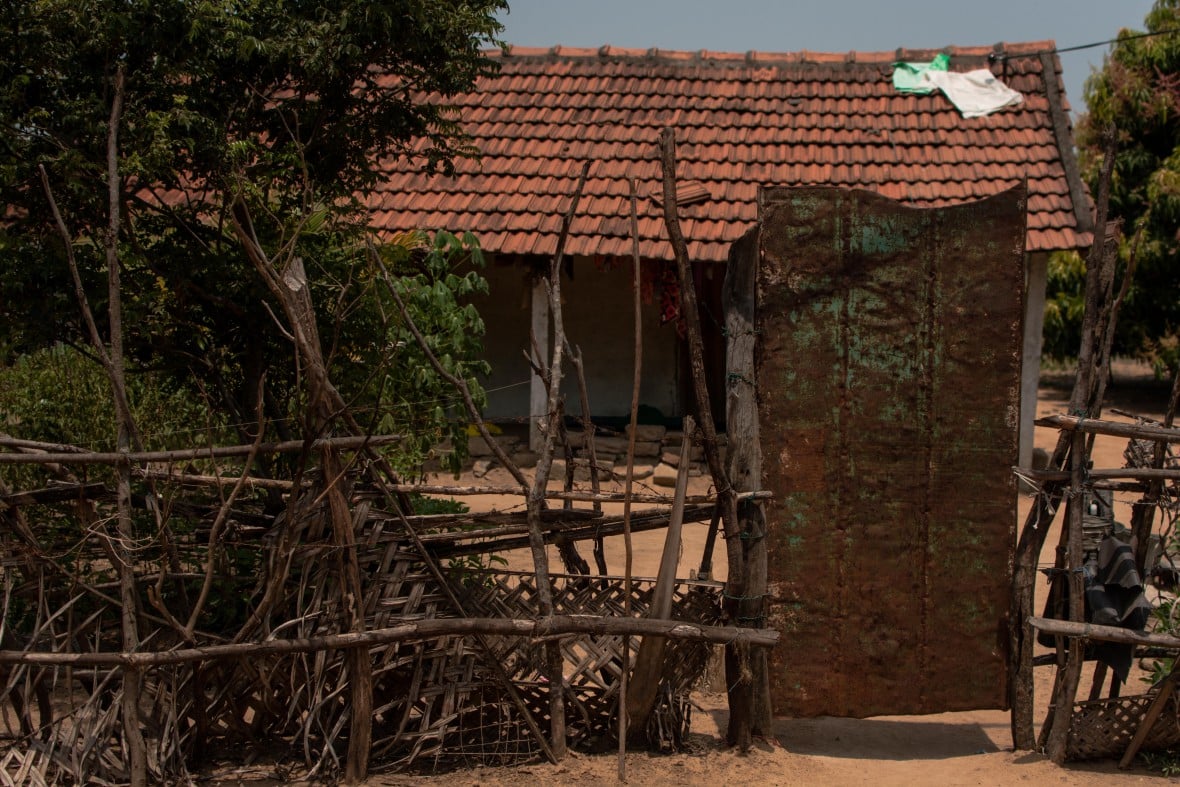
A fence in front of one of the Vedda houses
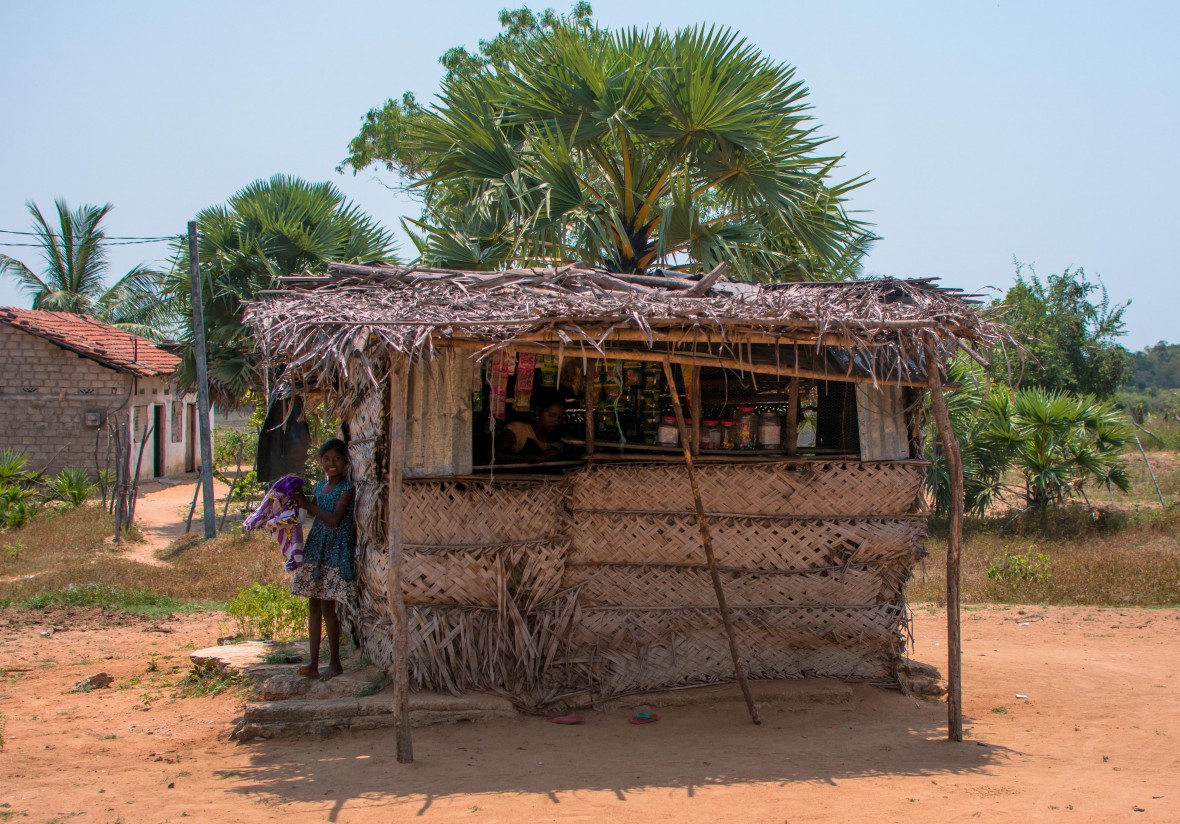
Overtime the Veddas changed. What we expected to see and what we saw were two completely different things. The war forced them to move out of the forests and stay in the village, thus they have opted for more modern lifestyles and food. Seen here is a little shop run by one of the ladies in the village.
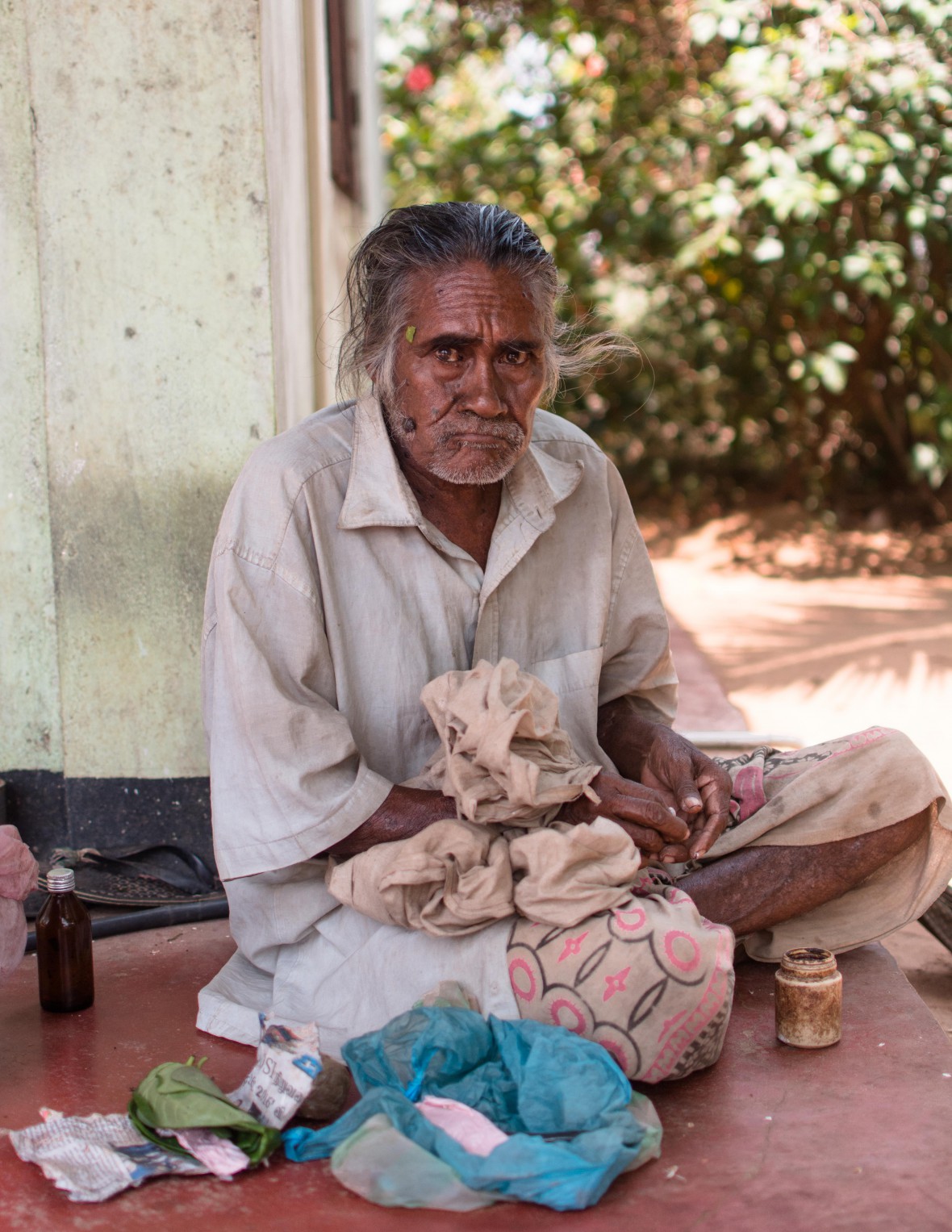
The former chief. He is now blind.
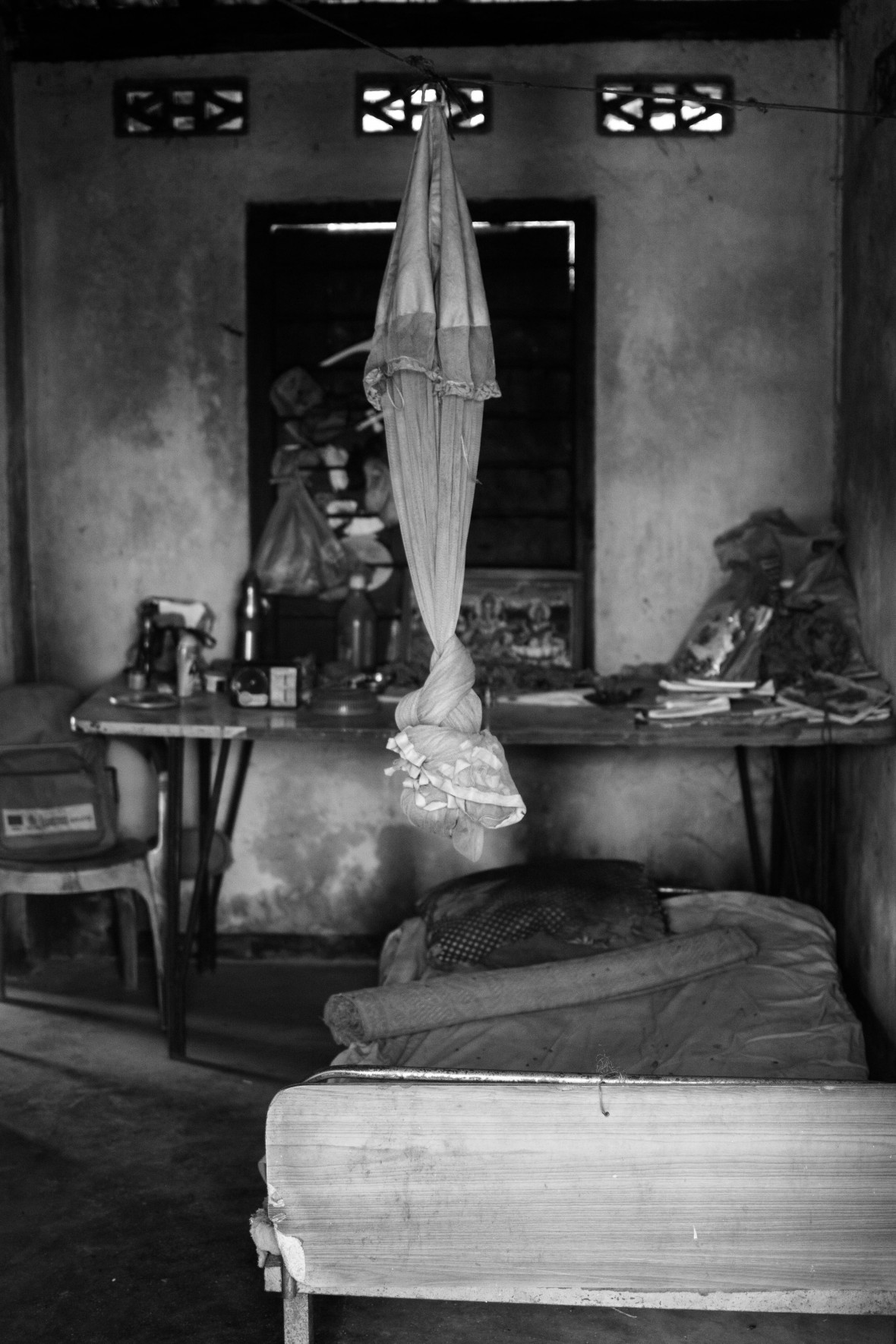
Inside the Chief’s home
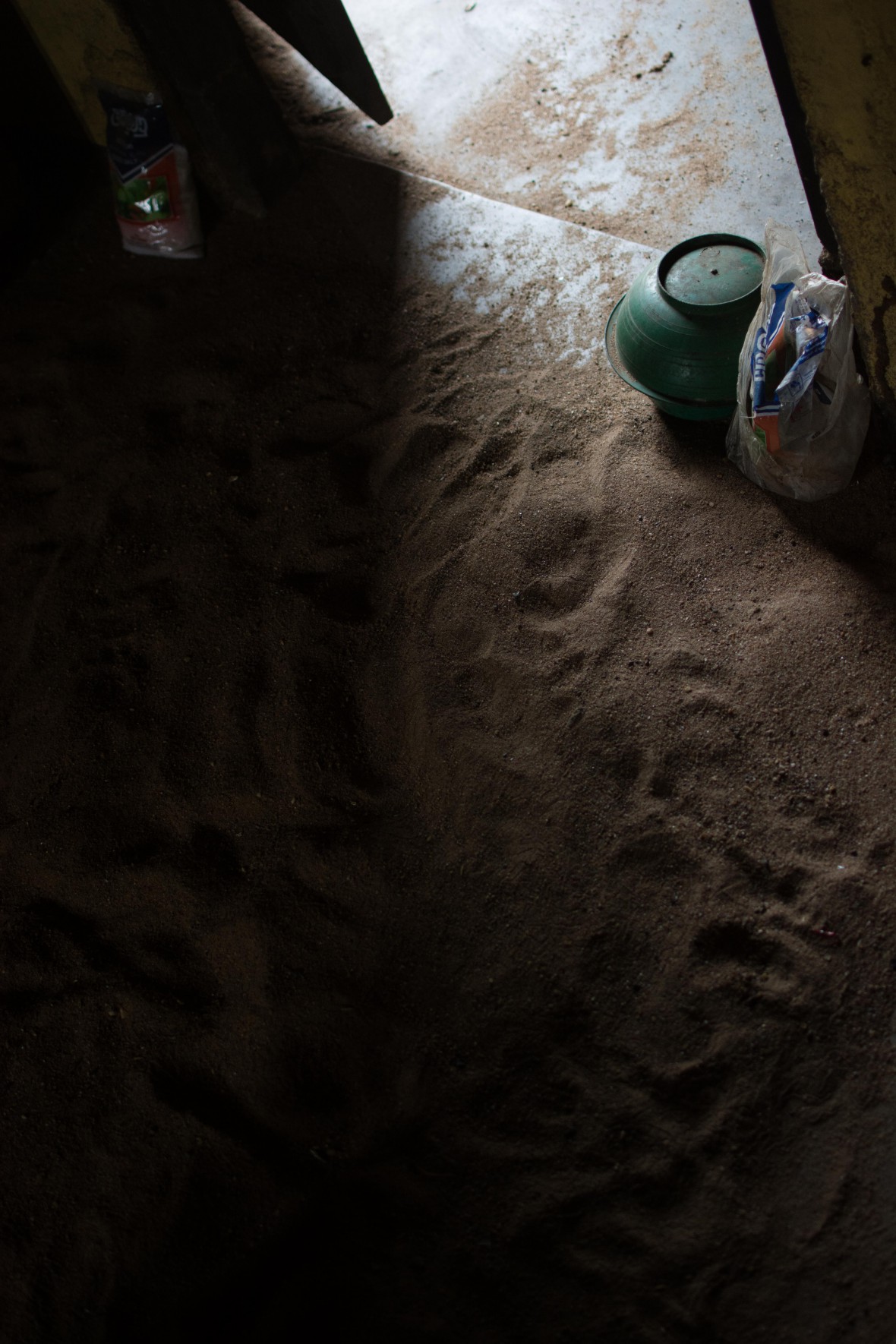
Inside the Chief’s home
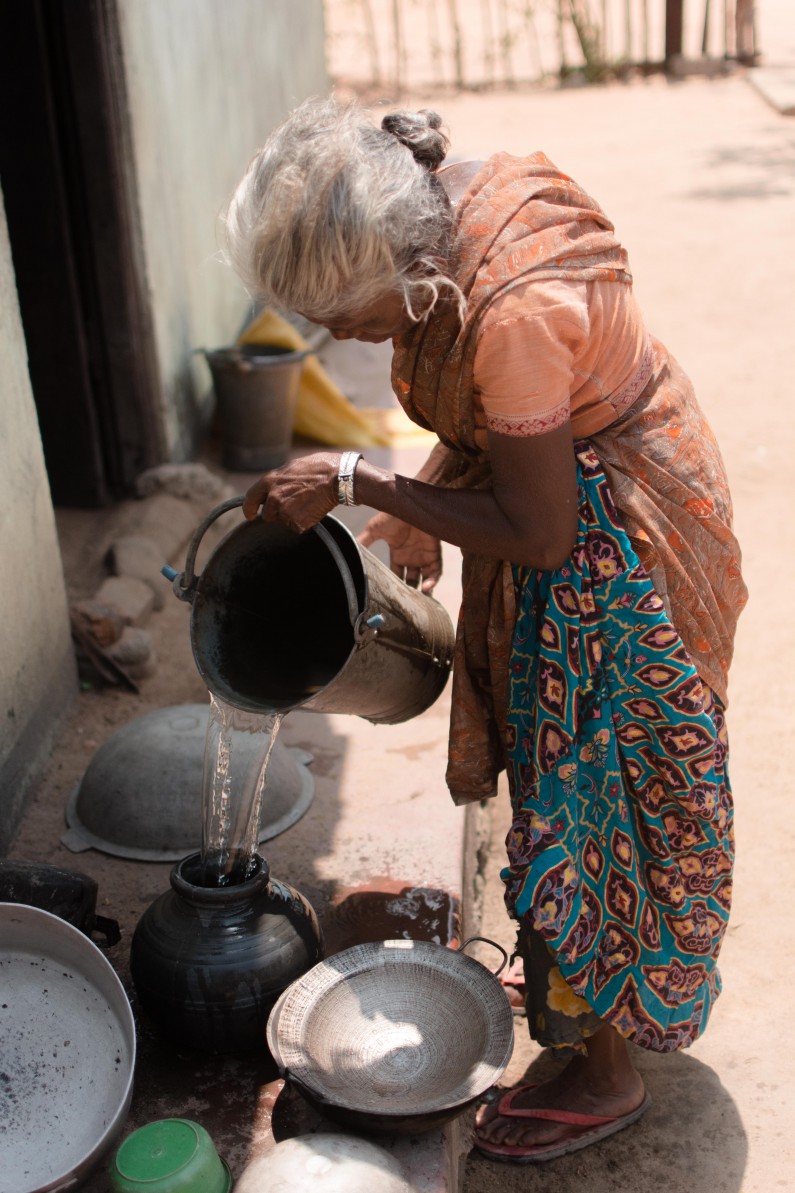
“We have a major problem with regard to cultivation. Most of the crops have dried up due to less rainfall. Currently we use our drinking water to water any crops we have.”
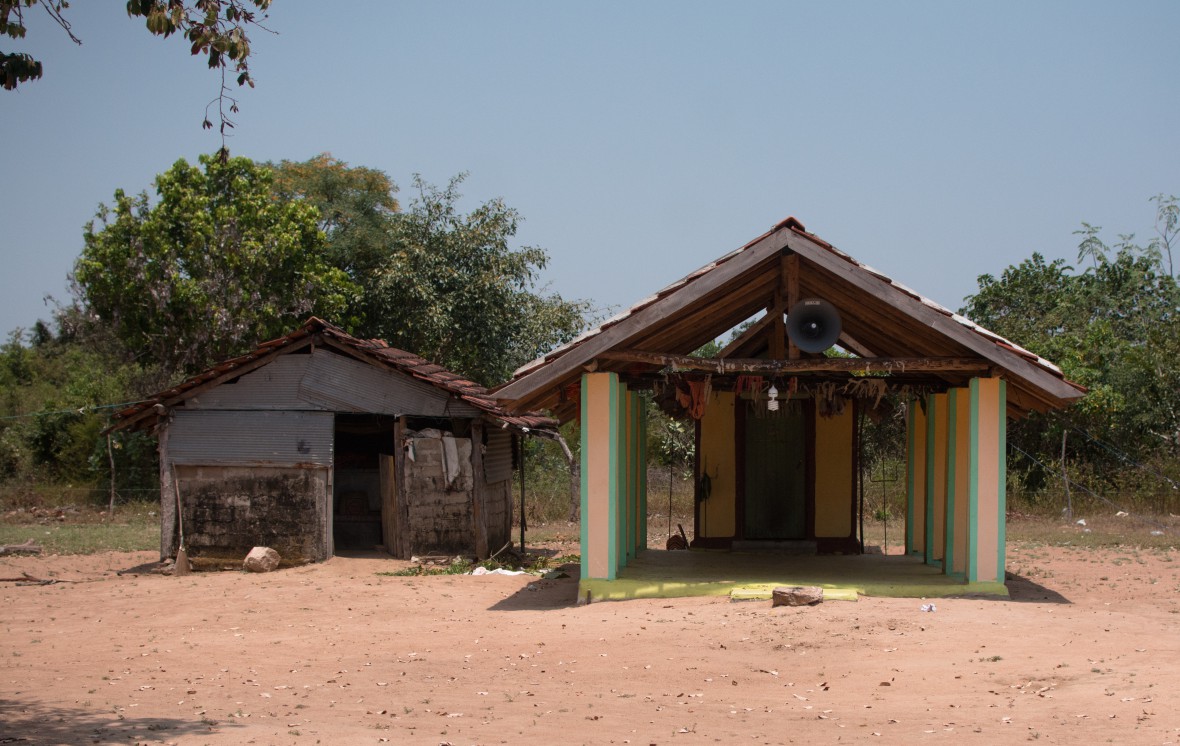
“No statues or pictures [of our Gods]. Once a year we have a ritual. We were unable to do this in the forests due to the war. Thus we are used to doing in the village now.”
The village temple where the Vedda gods are worshiped. Entrance to the area was denied.

“The Mahiyangana sect are Buddhists and East coast Veddas are mostly Hindus. However, over the past few decades, we have been moving back to worshipping our traditional gods like Kola deiyo, Kela deiyo, Gala deiyo, Handun Kumari, etc.”
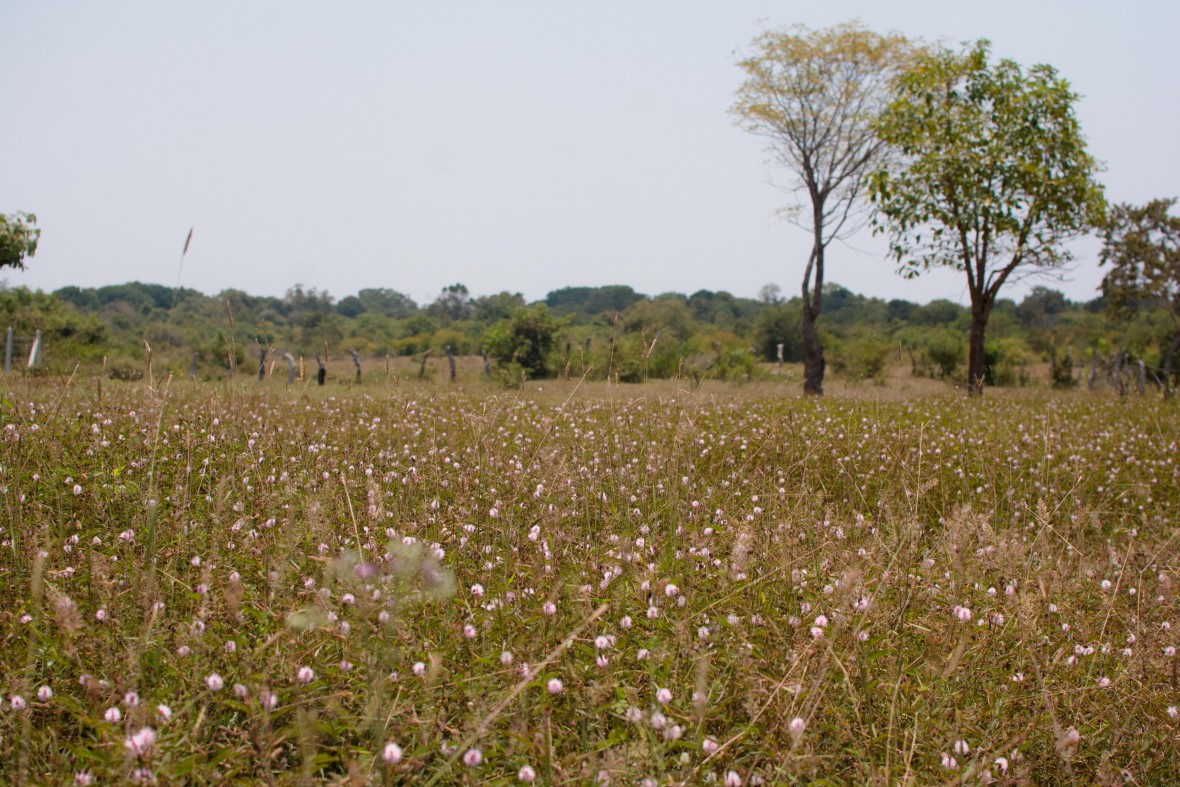
Dryland fields of Kunchakulam
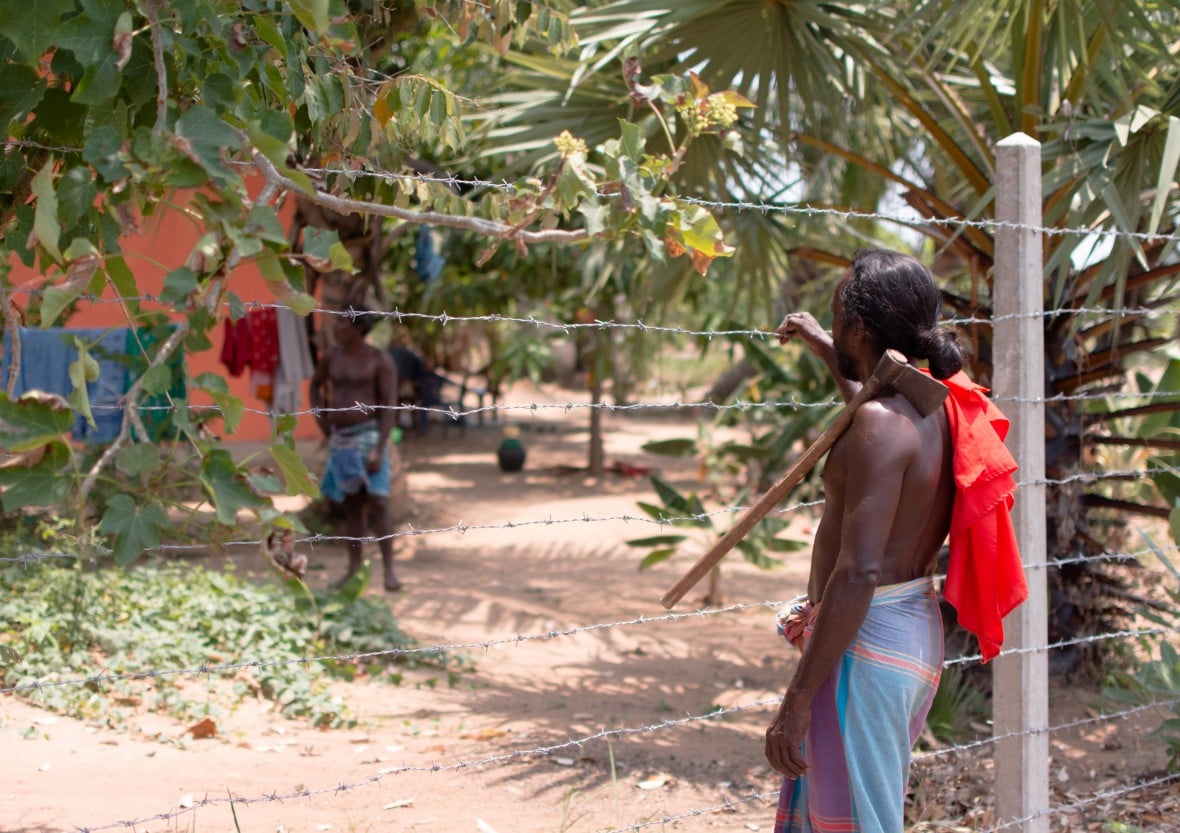
The chief talks to another Vedda about the drumstick harvest
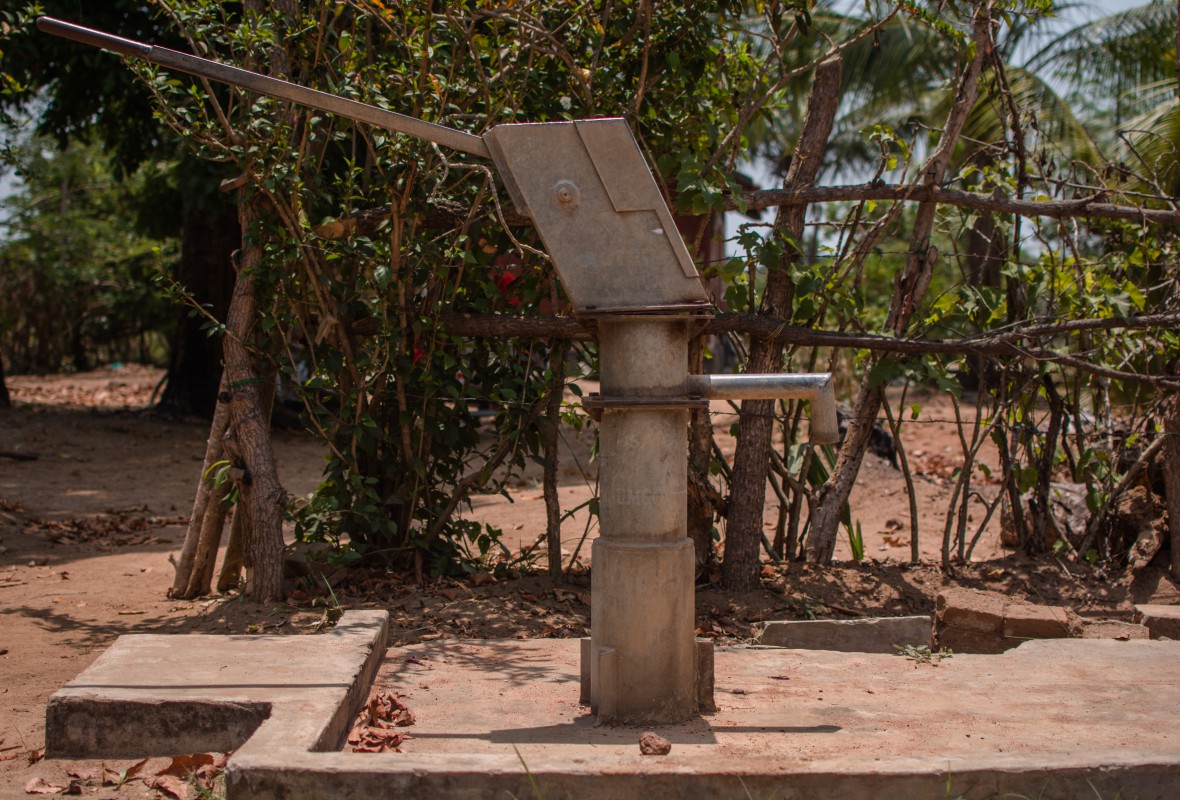
A dried up well.
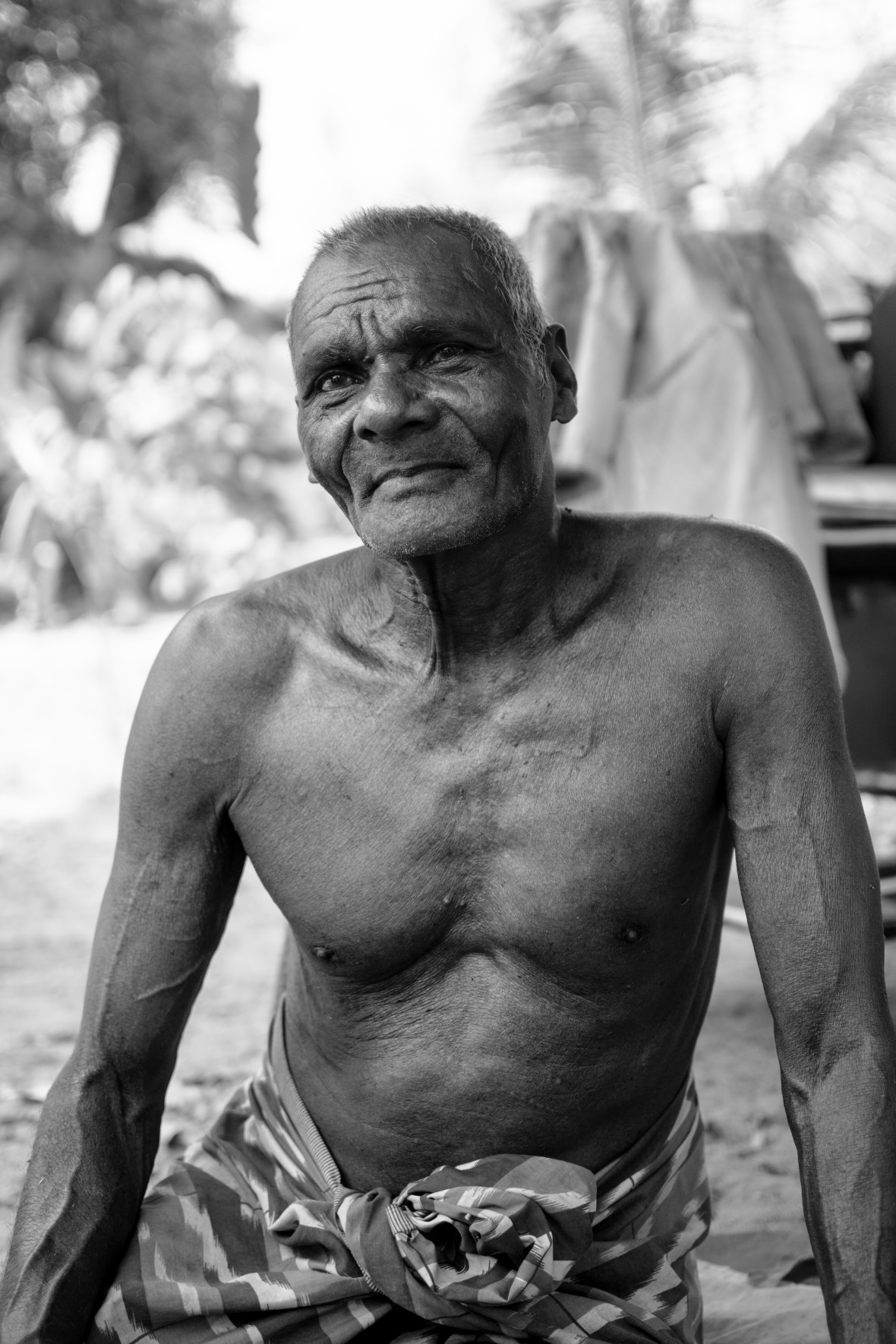
A Vedda elder.
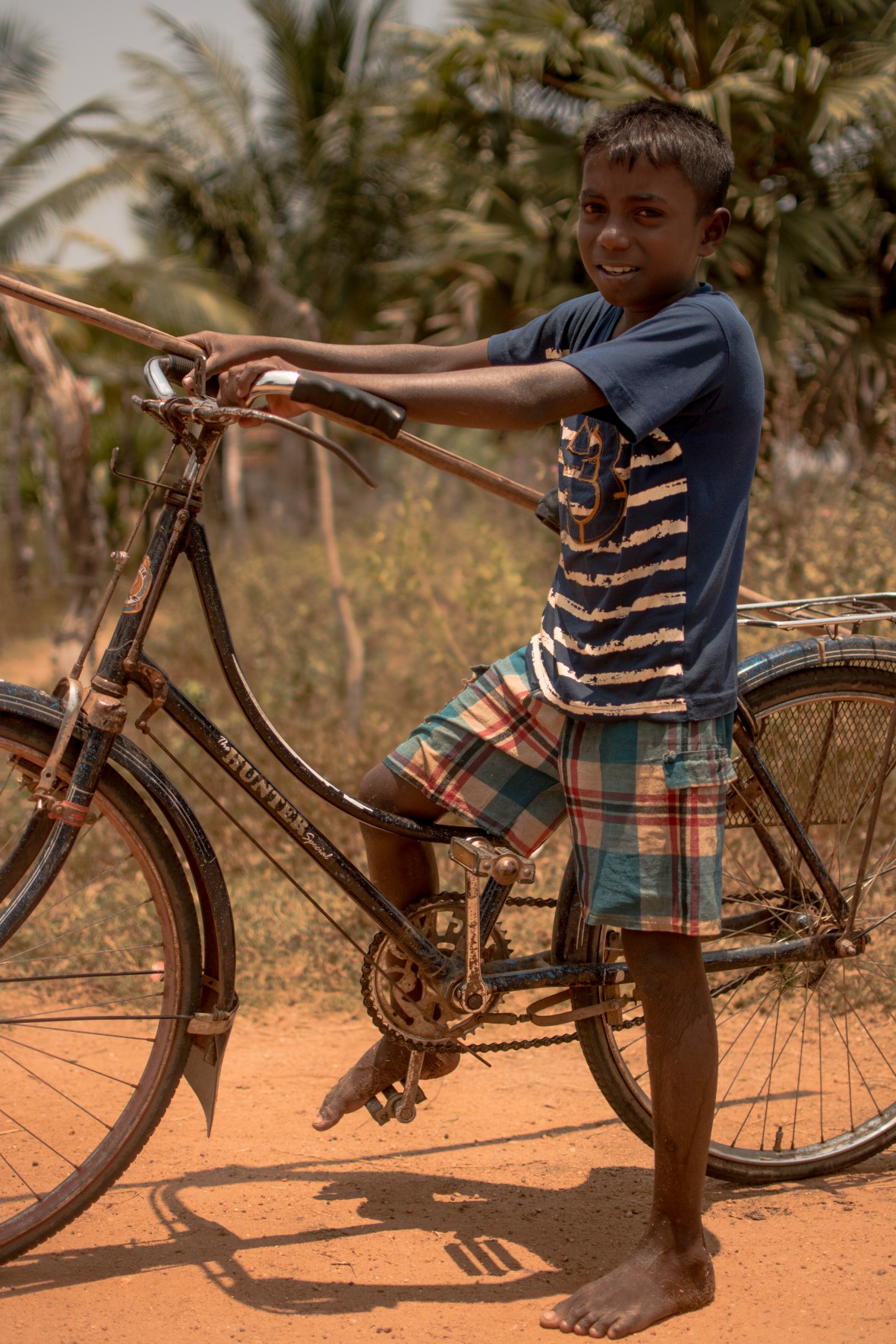
One of the village kids
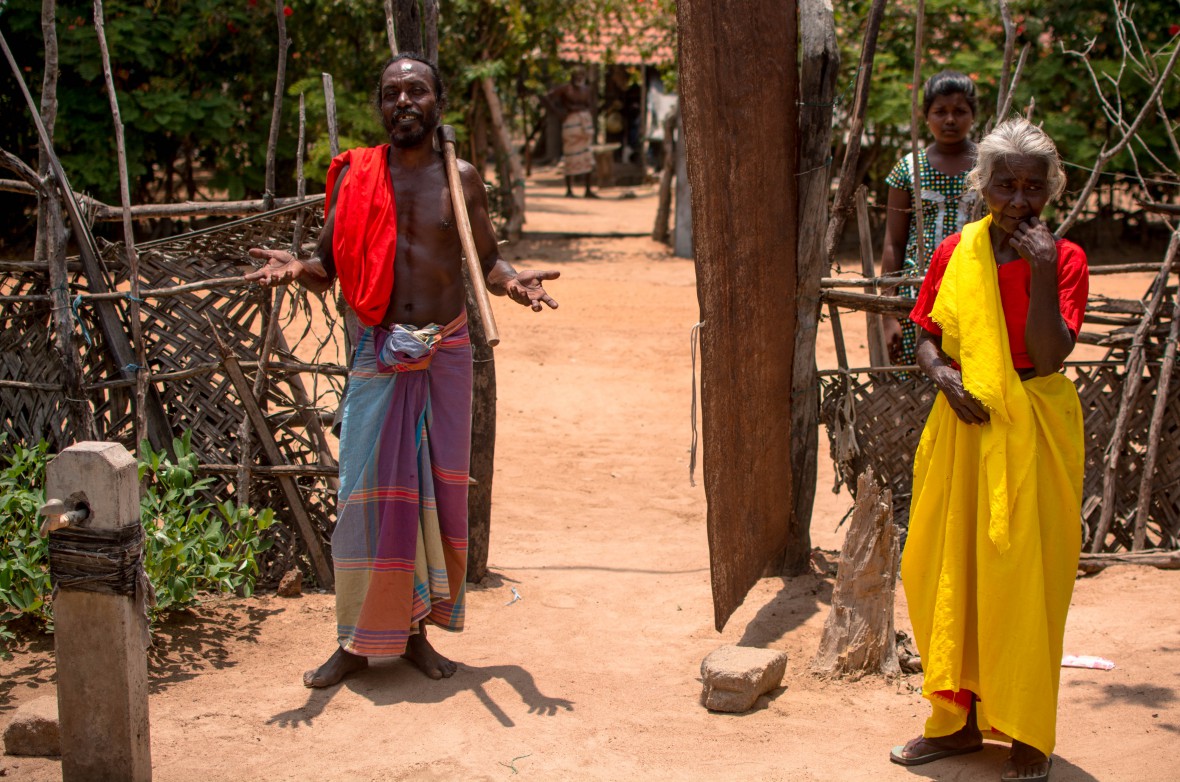
“She is a widow, with no income [and cannot sustain her family due to water shortages, resulting in a halt in farming activities]. We have signed many petitions with regard to this in the municipal council, but no action has been taken. If the government wishes to, they can direct water from the lagoon to a tank and then direct water to the crops, it would be a great thing.”
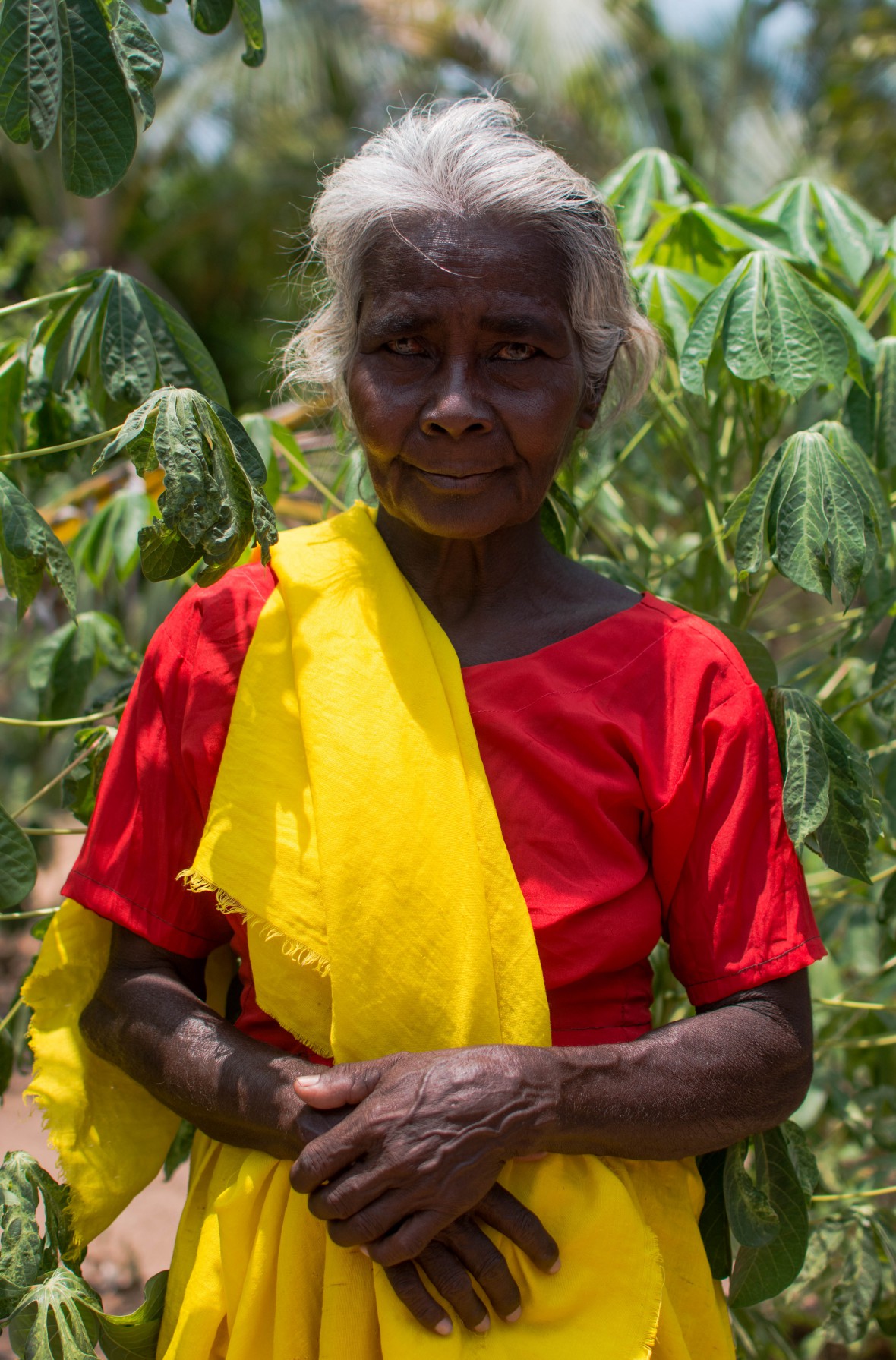
One of the few women who were around at the time of our visit.

A village elder
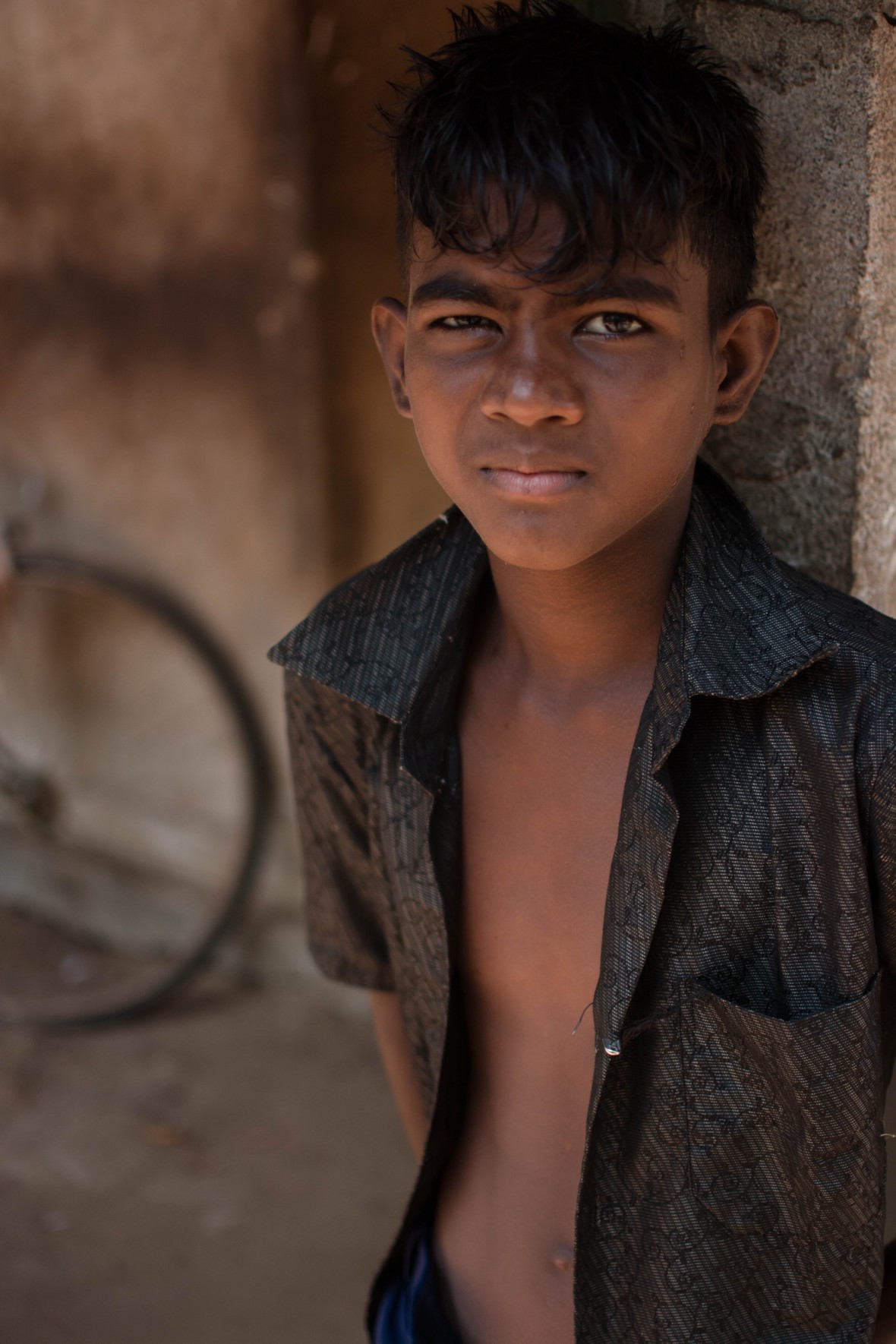
A young boy on school holidays
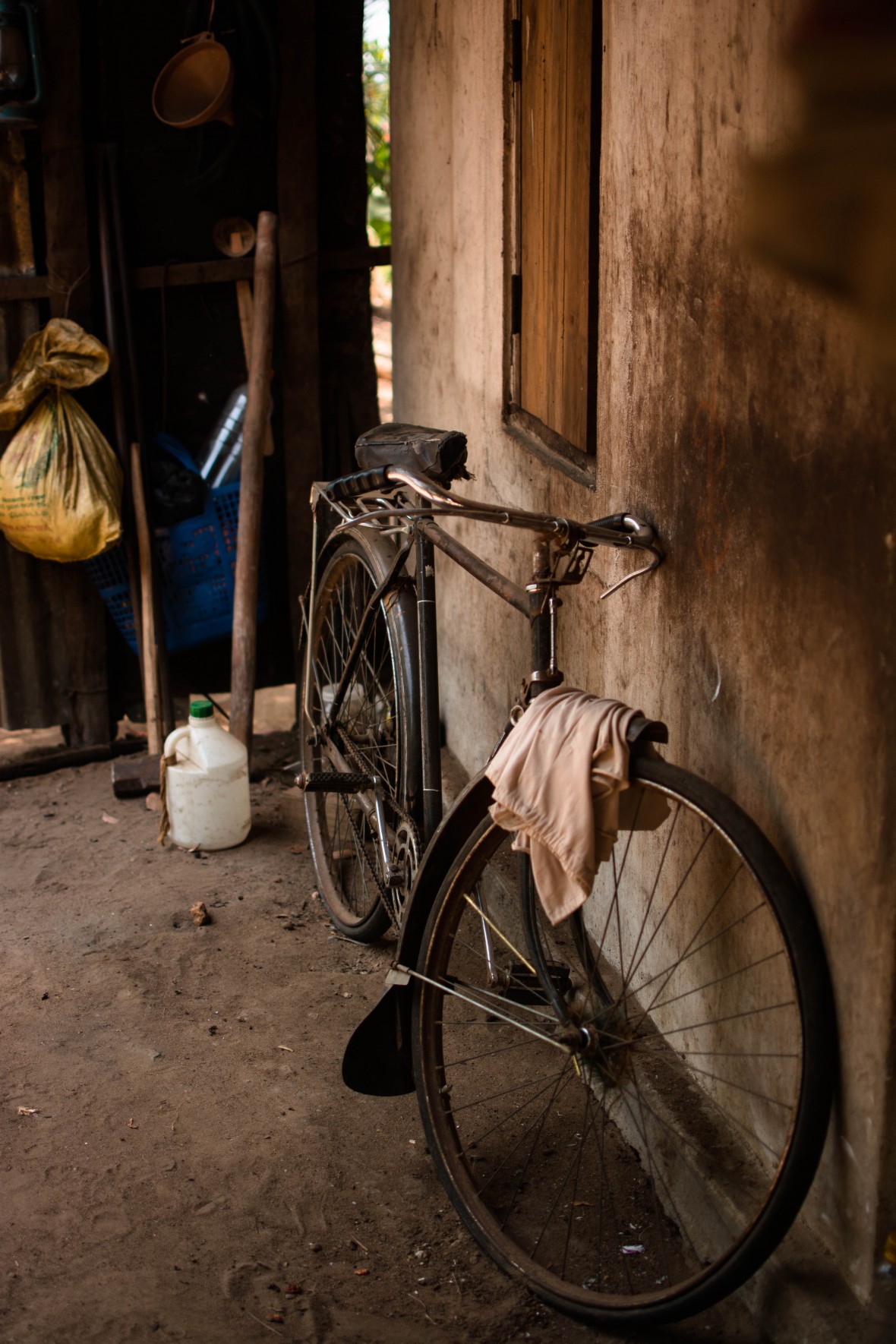
The only mode of transport, 10kms towards the closest town.

“One day when the children we going into the forests, the SL Army caught them. One child at the back of the group ran back and told us that the Army has caught the children. So I had to go back into the forest and convince the SLA that we sent our children not to deliver food to the LTTE, but because they were threatening to recruit our kids, and that a huge group would coming in at 4pm. I told him that to believe us you will have to come with me, and at 4pm close to 600-700 cadres crossed the village. Only after that did they release our children and started to believe us.”
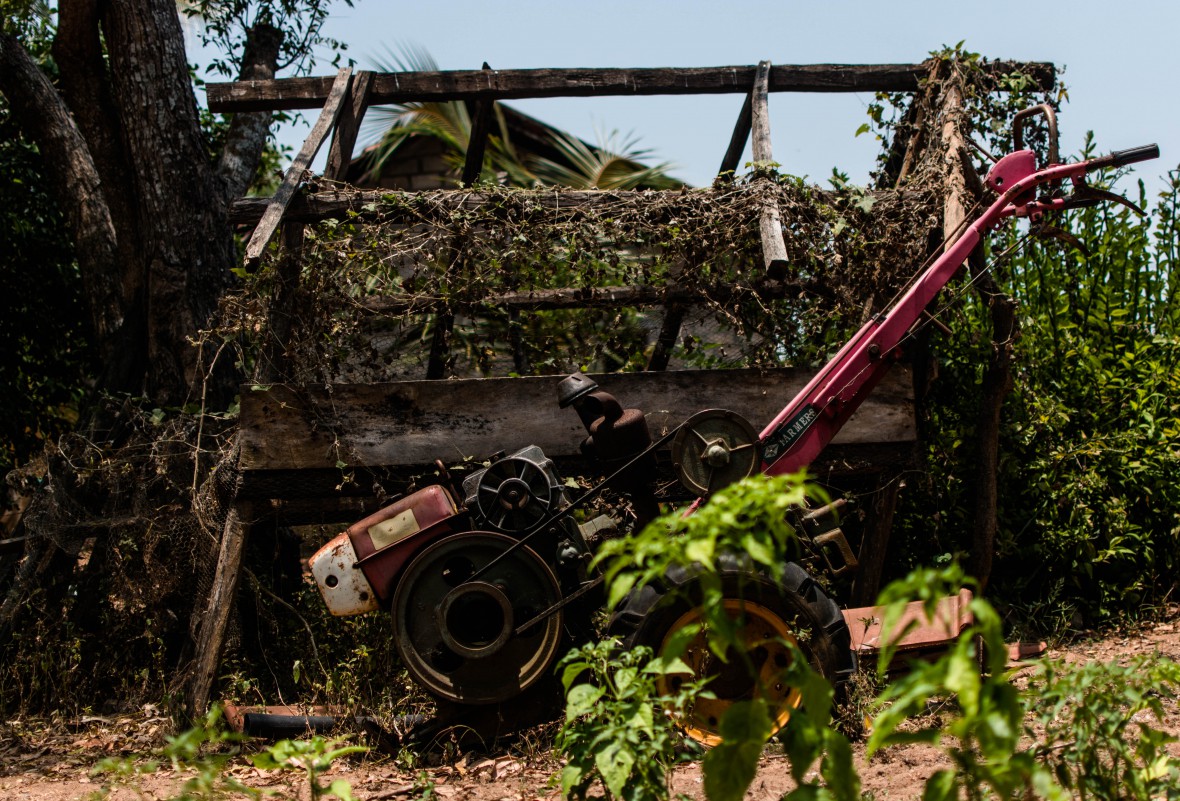
Decreased rainfalls have caused tremendous damage to the Veddas cultivation, and a restriction on hunting is further affecting their livelihoods. Seen here is old farming equipment which is no longer useable.
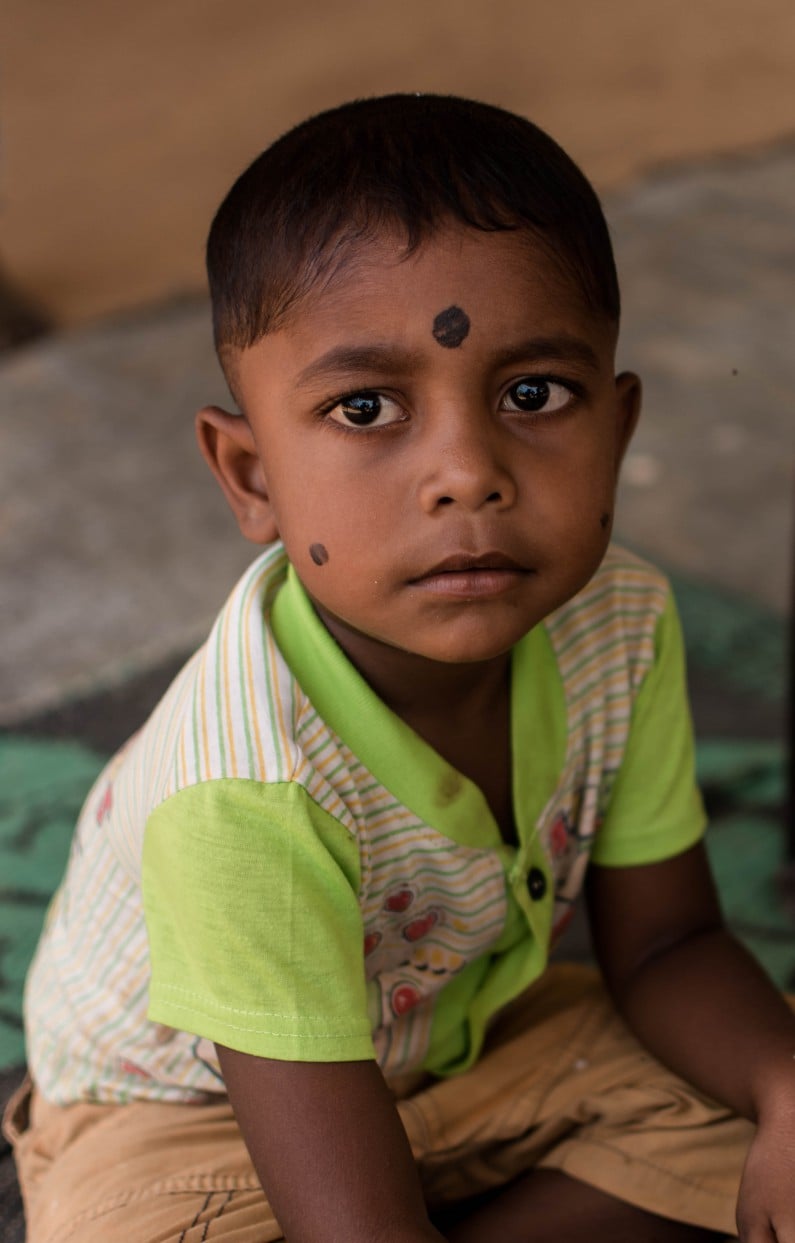
One of the youngest of the tribe
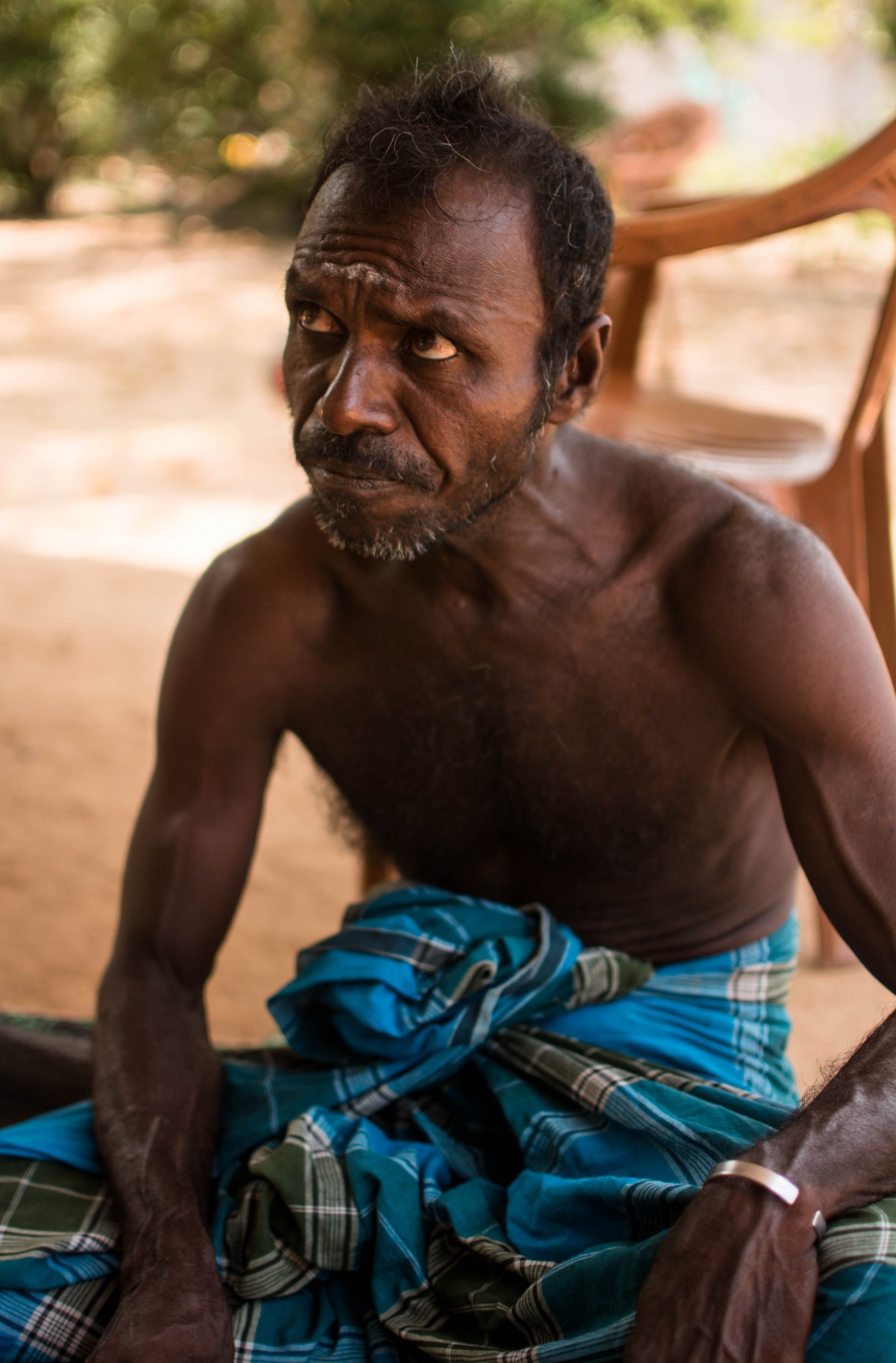
“We are grateful for the food which our gods have blessed us with.”

The surrounding lagoon, Kuncha Kulam.

